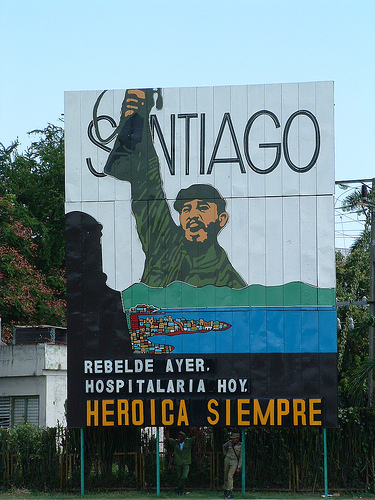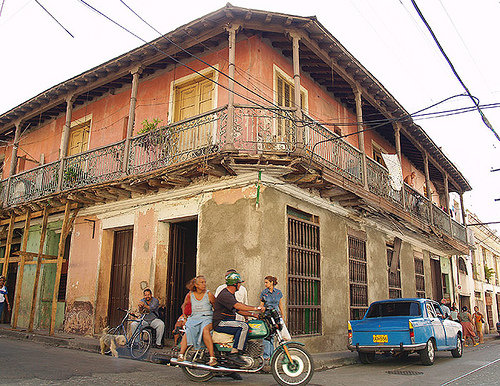Cradle of the Revolution (II)
By Francisco Castro
And everything remains in its place
The paving stones and the past
[…]
William Vivanco.

Santiago hurts. Especially the immobility of its people. And its entities and organizations. And its government and its way of thinking. Walking the streets of this city scares me, because I feel like I have travelled back in time to gray decades of life in Cuba.
It is true that, from a historical point of view, despite being the second most important city in the country after Havana, Santiago has always been an echo of what happens in Havana.
At the beginning, when we were a Spanish colony, due to a problem of distance, all royal dispositions arrived first in Havana and several weeks or months later, to Santiago.
This led to a sort of distancing between these two cities, a distancing that we have dragged along with us to present days, and which can be seen in the rivalry between the baseball teams of the two cities.
This rivalry reaches its peak at the end of the national baseball series when the absurd competition between the inhabitants of the two cities becomes a war of insults. People from Havana call those from the eastern region of the country, especially from Santiago, “palestinos” (Palestinians).

There are several cultural differences between the two cities which may go unnoticed to the visitor. For example in the way people dress, speak and walk, and in the music, dancing and food. Another thing that happens is when someone says they are from Santiago or from another eastern province; people invariably shoot them a strange look, almost a curse, even when that person from Santiago or some other Eastern province is as atypical as me.
This constant devaluation of this portion of the Cuban territory has had an impact in the self-esteem of a large part of its inhabitants, whose consequences have been underestimated by those in charge of the country’s social organization. Without being too apocalyptic, I think that something needs to be done to avoid making the problem worse than it already is.
My latest trip to Santiago de Cuba gave me the impression of a people that seemed more like a herd of sheep than human beings. Watch out for the sheep, they could be wolves in sheep’s clothing, and not the kind that dress like transvestites -a trend pushing to establish itself in Cuba-, but the kind who show their fangs when the shepherd least expects it.

I will not attempt to question or dispute any of your findings rather, as someone who purports to love Santiago de Cuba as much as I and thousands more do, I wonder why these extensive descriptions of the ills, problems and failures of our beloved city, are not followed with ideas, suggestions, proposals, screams for help, eventhough no one may look into them, change or say thanks for your concerns. That is secondary, at least, you would have fulfilled your social responsibility of denouncing what is wrong. You are in your prime years and with a bright future ahead. I encourage you to do for our city what Guillermon, Mariana or Maceo did, when faced with greater challenges. Good Luck.